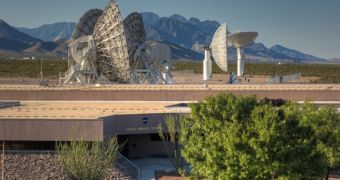As the Space Shuttle Program (SSP) was being set up, researchers acknowledged the need to have the orbiters remain in constant contact with Mission Control. Out of this necessity, the Integrated Network was born, a multi-purpose installation capable of achieving this monumental task.
For the following 30 years, the network has provided non-stop communications capabilities to both NASA Mission Control, at the Johnson Space Center (JSC), in Houston, and shuttles carrying out missions in low-Earth orbit, or heading for the International Space Station (ISS).
The team managing this installation had a fairly simple, yet-complex mission – always ensure a direct link between shuttles and the ground. The mission began when the orbiters left the NASA Kennedy Space Center (KSC), in Florida, and ended when they returned to Earth.
The “Integrated Network” has always been managed by the NASA Goddard Space Flight Center (GSFC), in Greenbelt, Maryland. Experts here were responsible for carefully choreographing the functions of numerous antennas and satellites to attain maximum coverage.
Some of the IN capabilities include NASA's ground-based antennas, the agency's Space Network (SN), the Near Earth Network, the NASA communications relay satellite network, commercial communications services, as well as multiple ground stations belonging to the US Air Forces.
The latter provided crucial tracking, telemetry, and command services during space shuttle missions. The NASA Space Operations Mission Directorate (SOMD) and the Space Communications and Navigation Program financed both the SN and NEN.
“Every Human Space Flight mission from Mercury, Gemini and Apollo to the Space Shuttle and Space Station programs, has relied on the communications assets managed by Goddard,” Jeff Volosin says.
“Beginning at lift-off, any time an astronaut talked to mission control, whenever you saw video from the shuttle or the International Space Station, all system performance data received during flight, or when information was sent to the astronauts, it always traveled through Goddard's networks,” he adds.
The NASA official holds an appointment as the deputy director of the GSFC Exploration and Space Communications Projects Division. He says that the NEN also included the Merritt Island Launch Annex (MILA), which was recently shut down with much fanfare, after Atlantis' last landing.
During a standard launch, a shuttle would be controlled by MILA (first minute of flight), then the Ponce De Leon Inlet Tracking Annex (PDL), in New Smyrna Beach, Florida. Minutes later, MILA would resume its communications, and both antennas would continue to provide support.
The NEN ground station on Wallops Island, in Virginia, was next in line, providing critical downlink capabilities for the cameras aboard the shuttles and their external fuel tanks and solid rocket boosters.
As the orbiters reached orbit, the space-based relay satellites of the Space Network (SN) became the primary means of contact. However, MILA and WPS continued to provide support, alongside antennas at the Dryden Flight Research Center, in California, and Santiago, Chile.
“The monumental task of implementing shuttle communication requirements would not have been possible if not for the technical expertise and professionalism of our contractors and civil servants here,” NASA official James Bangerter adds.
“This integrated network approach brought together assets on the ground and in space to meet the challenge of shuttle communications,” adds the expert, who is the Networks Director for Human Space Flight at the GSFC.

 14 DAY TRIAL //
14 DAY TRIAL //